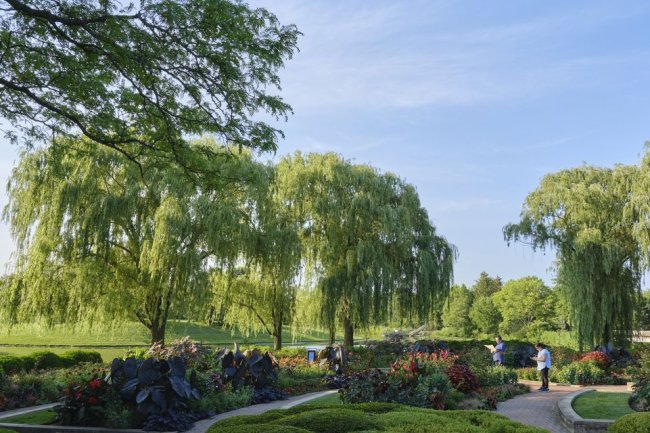‘Finding W.H. Hudson’ Review: The Enigmatic Birdman
The mysterious, contradictory life of the man who devoted himself to the preservation of England’s birds. Detail of the portrait of W.H. Hudson by Frank Brooks that hangs above the fireplace at the Royal Society for the Protection of Birds headquarters in Sandy, England. Photo: Conor Mark Jameson By Christoph Irmscher Aug. 11, 2023 3:45 pm ET William Henry Hudson (1841-1922), one of the founding members of the Royal Society for the Protection of Birds, must have been quite a sight when, perched high atop his Sunbeam bicycle, he roamed the English countryside in search of his beloved feathered friends. A beanpole of a man, decked out in tweeds, waistcoat and laced boots, looking more British than the British, he kept himself cool by carrying a moist handkerchief inside his hat. Some believed that Hudson, sharp-eyed and constant


Detail of the portrait of W.H. Hudson by Frank Brooks that hangs above the fireplace at the Royal Society for the Protection of Birds headquarters in Sandy, England.
Photo: Conor Mark Jameson
William Henry Hudson (1841-1922), one of the founding members of the Royal Society for the Protection of Birds, must have been quite a sight when, perched high atop his Sunbeam bicycle, he roamed the English countryside in search of his beloved feathered friends. A beanpole of a man, decked out in tweeds, waistcoat and laced boots, looking more British than the British, he kept himself cool by carrying a moist handkerchief inside his hat. Some believed that Hudson, sharp-eyed and constantly on the move, was like a wild bird himself—a hawk, perhaps, or an eagle. His laugh sounded like that of the green woodpecker, reports Conor Mark Jameson in his new biography, adding that he could no longer listen to that bird without thinking of Hudson.
During the 25 years that Mr. Jameson worked in the offices of the Royal Society for the Protection of Birds, a portrait of a binocular-wielding, squinty-eyed Hudson stared back at him silently from over a mantelpiece. A Cambridgeshire writer and conservationist, Mr. Jameson became determined to restore Hudson’s voice. He combed through the archives for traces of his hero and meandered across Britain—sometimes on a bicycle himself—to re-create Hudson’s travels (and was mightily pleased when he found a goldfinch exactly where Hudson had heard it too). The result is a sprightly, conversational book, sprinkled with autobiographical asides, a creative blend of detective work and narrative intuition (“we can only guess”), as hard to pin down as its subject.
15 Books We Read This Week
George Orwell’s marriage, the unlikely life of an early Hollywood star, the man who changed American folk music and more.
If “Finding W.H. Hudson,” at the end, doesn’t really “find” W.H. Hudson, that’s par for the course. Hudson was a puzzle even to his closest friends. For starters, he wasn’t really British. Born in Argentina to parents originally from the United States, Guillermo Enrique, as he was known to his neighbors, grew up on the Pampas surrounded by horses, sheep and herds of cattle, with a small library his only link to a world of cultural refinement. Hudson later burned much of his correspondence, but that hasn’t kept the biographers from wondering about his reasons for emigrating to England in 1874. In his “Living in the Sound of the Wind” (2015), the model behind Mr. Jameson’s efforts, the literary critic Jason Wilson asks the obvious question: Why would a professed nature enthusiast like Hudson decide to leave Argentina, a country with “enormous open spaces and a blue dome of sky and no pollution,” and settle in soot-blanketed, overcrowded London? To which Mr. Jameson adds the equally difficult-to-answer question that preoccupies him: Why would a South American naturalist, virtually from the moment of his arrival, become so passionately involved in efforts to save the wild birds of a country not his own?
Hudson’s life abounded in contradictions. After he came to England, he threw himself into natural-history writing, producing a steady stream of the most beautiful descriptions of South American as well as domestic birds, conjuring “the overflowing gladness of the lark; the spirit of wildness of the black-cap; the airy, delicate tenderness of the willow-wren” (“British Birds,” 1895). But while Hudson remained adamant that he wasn’t “one of you damned writers,” he became internationally known for a novel, “Green Mansions” (1904), in which a Venezuelan political refugee hiding in the woods falls madly in love with a birdlike jungle creature named Rima (things don’t end well). Hudson’s lush reverie was later made into a Hollywood movie with a lanky, unfailingly kempt Anthony Perkins alongside a pixyish Audrey Hepburn, who looks as if she had just popped in from her dressing room. Arguably, the fakeness had started even earlier: Hudson himself never set foot in the Venezuelan wilderness.
Hudson didn’t make it easy for people to like him. Even before he came to England, he loudly criticized Darwin for assuming a certain species of South American woodpecker fed on the ground and never visited trees. Darwin adjusted the offending passage but also snarked at this disrespectful “fellow worker,” likely a disbeliever in evolution, who had so gratuitously attacked him. Mr. Jameson gives Hudson high marks for “his forthrightness” of approach but doesn’t mention that Darwin turned out to be correct, after all—see Hudson’s later, unapologetic admission in “Birds of La Plata” (1920).
Nevertheless, Hudson succeeded in attracting a large circle of devotees, and Mr. Jameson at times appears to be more interested in them than in Hudson himself. His book sparkles with skillfully drawn portraits of Hudson’s female collaborators at the Royal Society for the Protection of Birds or of such friends as “Don Roberto,” the Scottish-Hispanic politician Cunninghame Graham, who enjoyed parading his horse, gaucho-style, in Hyde Park. We learn much, too, about the literati who admired him, including Joseph Conrad, John Galsworthy and Virginia Woolf. (Ezra Pound thought well enough of Hudson to put him in his “Cantos,” as “Huddy . . . taller than anyone present”). A Hudson superfan was the eccentric Margaret Brooke, the estranged wife of the rajah of the East Indian territory of Sarawak, who shared Hudson’s twin passions for the tropics and ornithology: She would greet visitors to her Ascot mansion seated in a blue armchair, a green parrot attached to her wrist.
By the end of Mr. Jameson’s impeccably researched book, Guillermo Enrique’s secrets have been left mostly intact. For example, we still don’t know what to make of his likely sexless marriage to his much older landlady Emily Wingrave, a former opera singer who barely reached up to his elbow, or of his affair (if indeed it was) with the journalist Linda Gardiner, the editor of Hudson’s posthumously published “Rare, Vanishing, and Lost British Birds” (1923). It seems that W.H. Hudson himself was a bit of a lost bird, too.
We do know that Hudson came to regret his decision to leave his native country. “When I think of that land so rich in bird life,” he sighed in “Birds of La Plata,” “I probably made choice of the wrong road of the two then open to me.” But maybe it was precisely this experience of self-induced personal loss, of an opportunity given and then abandoned, that enabled him to be more attentive to losses of a different, larger kind—the disappearance of so many birds from British woods, fields and shores. Mr. Jameson aptly describes the passage of the 1921 Plumage Bill, banning the use of feathers in human clothes, as one of the highlights of Hudson’s life.
“Finding W.H. Hudson” gets us close to its odd protagonist, though never closer than Hudson himself got to many of his birds. Recalling a time in his Argentinian youth when he stalked a little red heron (now the striated heron) into a bed of rushes, Hudson admits he at first couldn’t locate the bird anywhere, only to discover, to his surprise, that it had been right next to him, a perfect imitation of a rush, neck and body frozen into an image of unassailable straightness. As Hudson circled around it, the bird turned, too, its motions corresponding exactly to Hudson’s own even as it remained rigidly in place. The elusive Hudson had found his match in nature: “I could not finish admiring, and thought that never had anything so beautiful fallen in my way before.”
—Mr. Irmscher is the author of “The Poetics of Natural History,” available in a new edition with photographs by Rosamond Purcell.
What's Your Reaction?

















